Ingo Maurer bathes Torre Velasca in red light for Audi's City Lab event
Milan 2016: German lighting designer Ingo Maurer turned Milan's Torre Velasca into a glowing red beacon with an installation for car brand Audi during Milan design week (+ slideshow).
The Glow, Velasca, Glow! installation coloured Milan's 1950s architectural icon with red lights to mark it as the location for Audi's City Lab exhibition during this year's Milan design week.
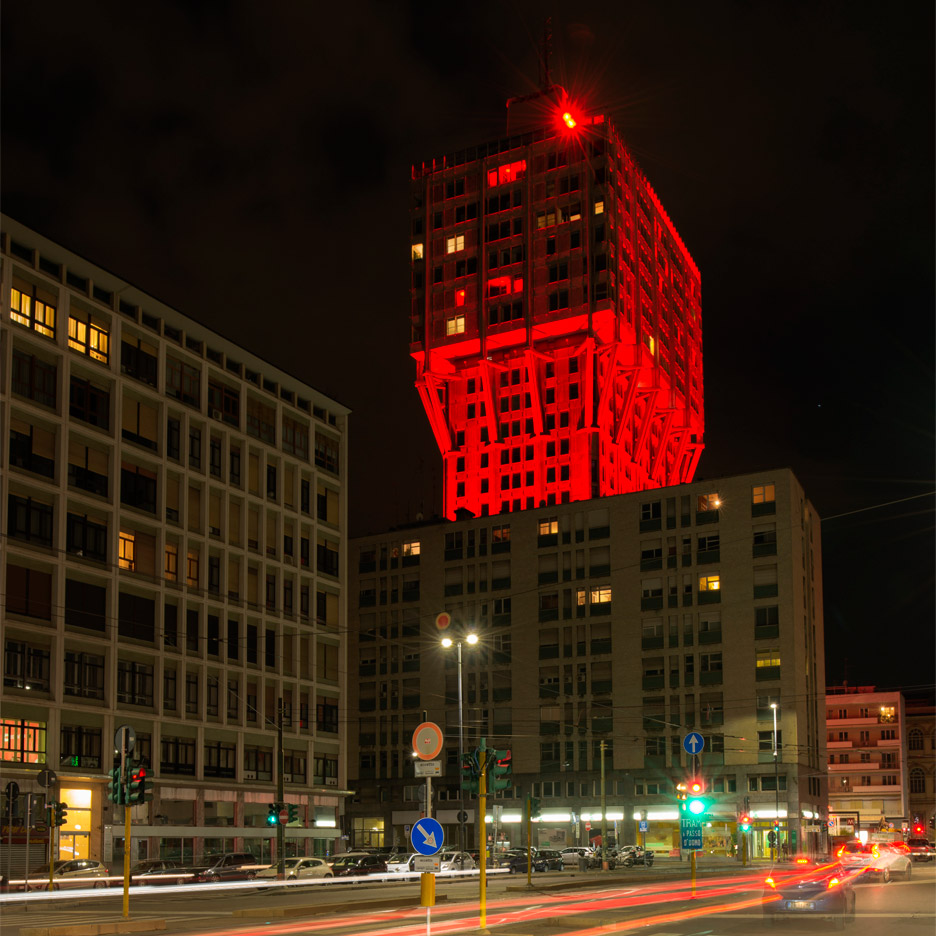
"We tried to enhance the appearance of the Torre Velasca by 'painting' it with red light," Axel Schmid, a designer at Ingo Maurer, told Dezeen.
"But different from paint, we could use light as if the colour comes from inside."
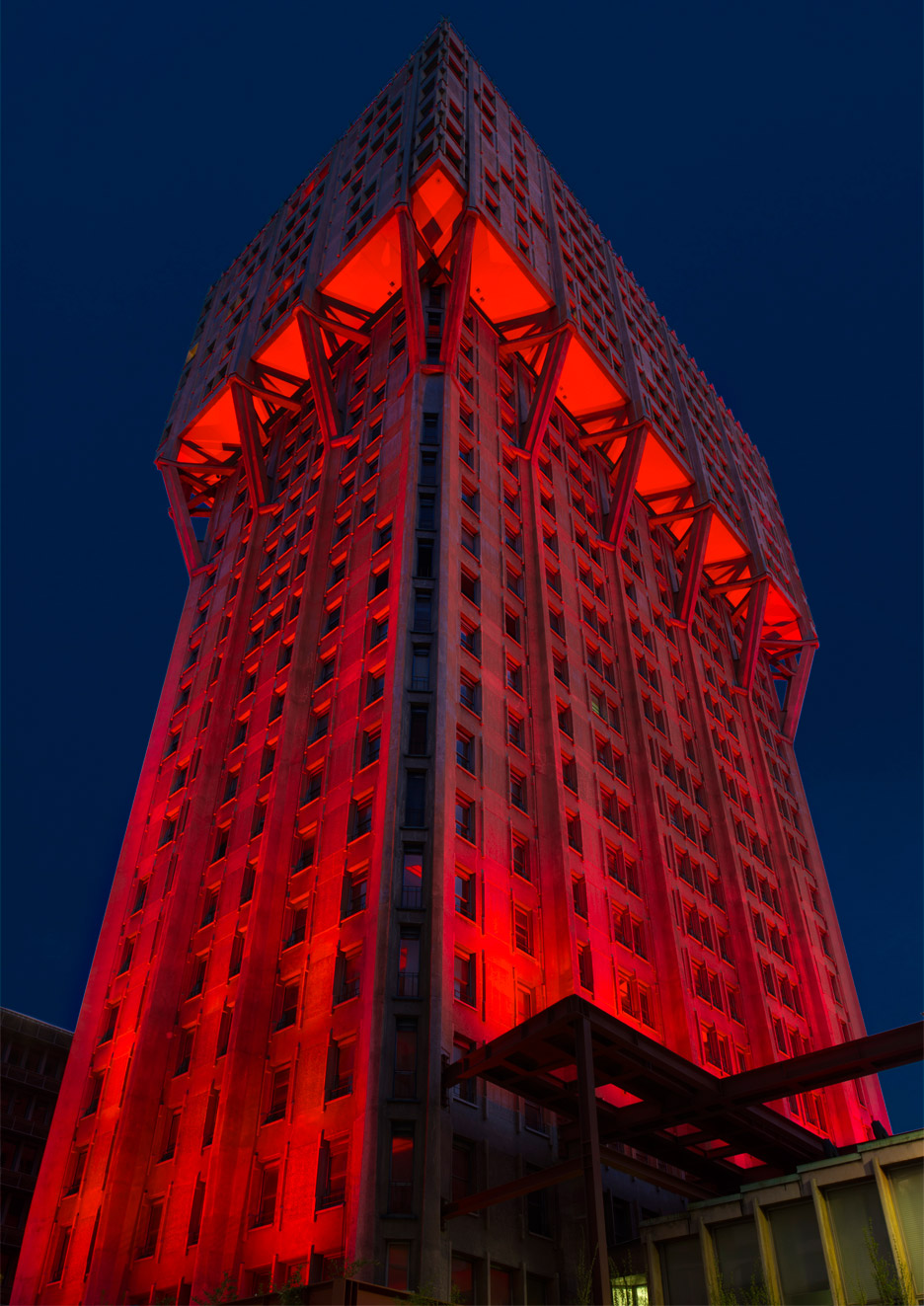
Red light was directed onto the lower two thirds of the 26-storey skyscraper, while the protruding upper third was left darker. The roof was also tinted red.
"Strong beams from below created a vibrant glow in the lower part and also enhanced the significant overhang above the 17th floor," Schmid told Dezeen.
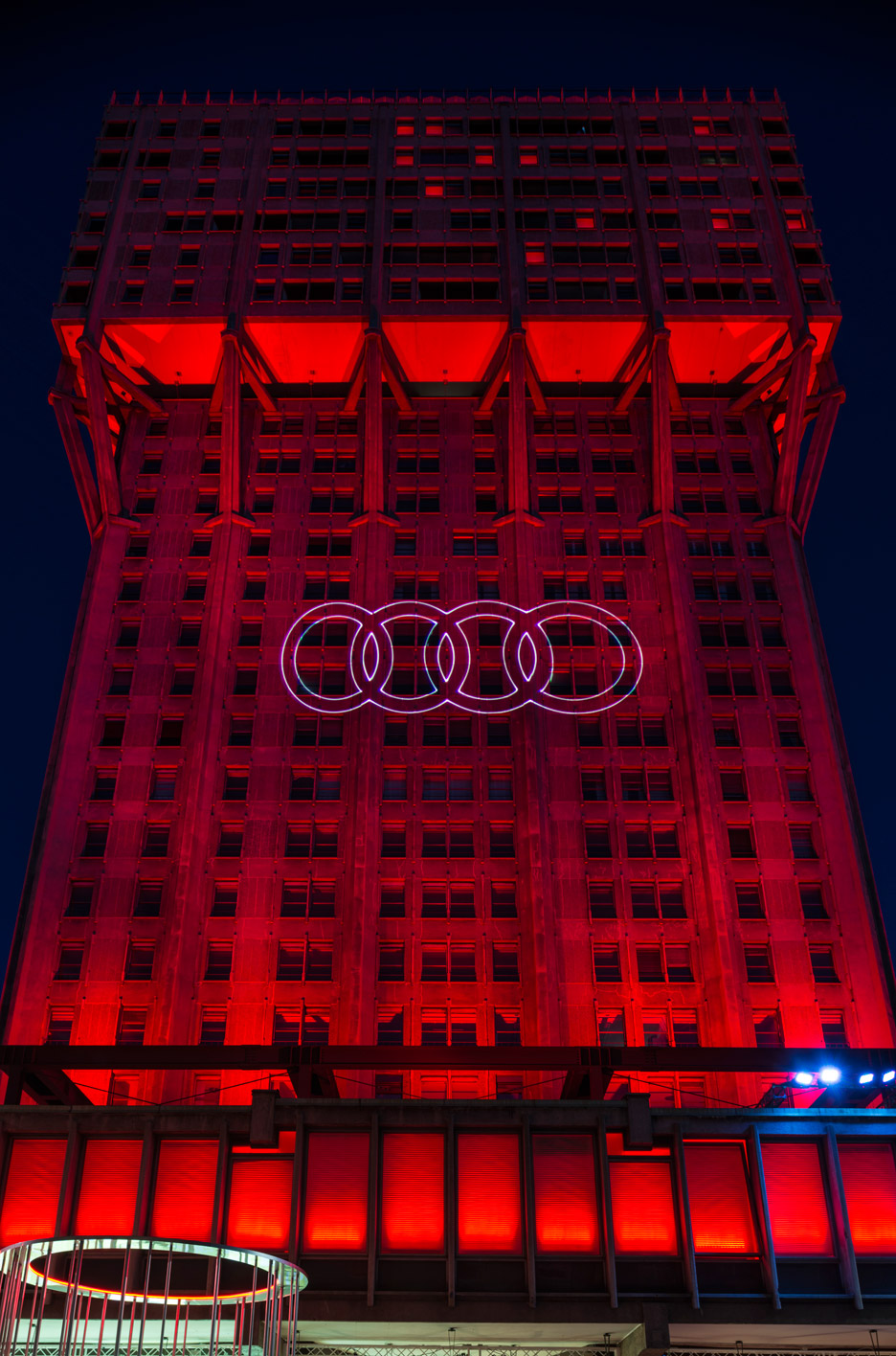
"The upper part we kept darker, just accenting details through grazing light and lighting some windows randomly from inside."
Four interlocking rings, resembling the car brand's logo, were displayed at intervals during the night time illumination, which was executed by lighting technician Castagna Ravelli.
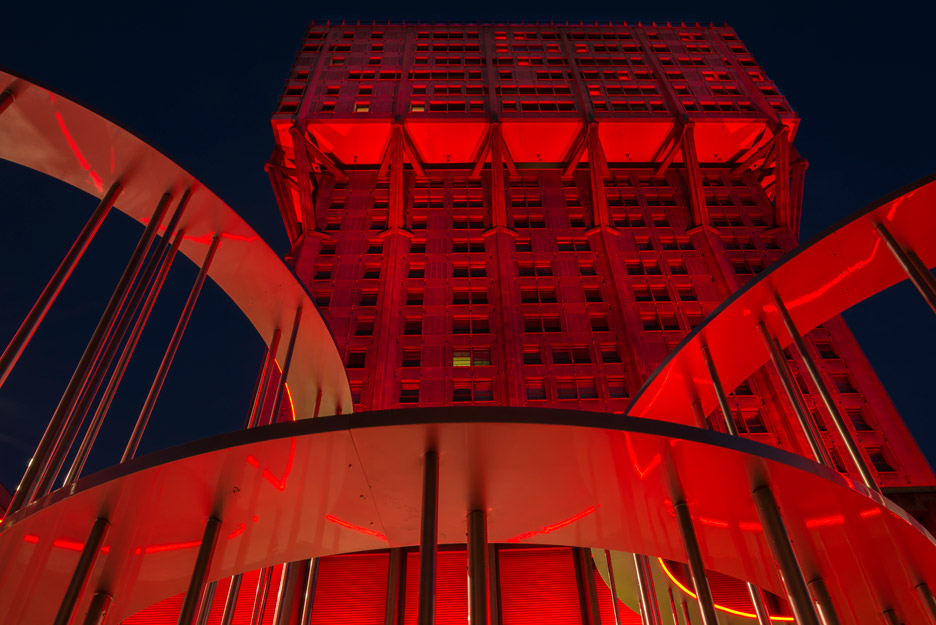
"We also designed a graphic animation of the Audi logo that was projected with white laser on one side of the tower in short sequences every hour," the industrial designer explained.
Torre Velasca – completed in 1958 by the influential Italian architecture firm BBPR – reaches 106 metres high and originally hosted shops, offices and exhibitions in its narrower section. Apartments with views of the Italian city were located in the upper third. It is now largely housing.
BBPR was founded by Gianluigi Banfi, Lodovico Barbiano di Belgiojoso, Enrico Peressutti and Ernesto Nathan Rogers in 1932, but stopped producing work during the second world war, when two of its founders were sent to a concentration camp and another was forced into exile.
Banfi died at the Mathausen concentration camp, but the firm regrouped after the war and completed three of its most significant projects – a memorial to holocaust victims in Milan, the American pavilion at the Triennale in Milan in 1951 and the Torre Velasca.
The tower's top-heavy form was designed to resemble medieval watchtowers and castles, as a way of recognising the history of Milan. The design of the projecting top third also included references to some of the Gothic architecture found in the historic city centre.
Italian designer Piero Lissoni renovated the ground floor of the tower to host Audi's City Lab exhibition during Milan design week.
The brand's Audi Q2 car was on display alongside designs for advances in lighting technology that could help make cars safer.
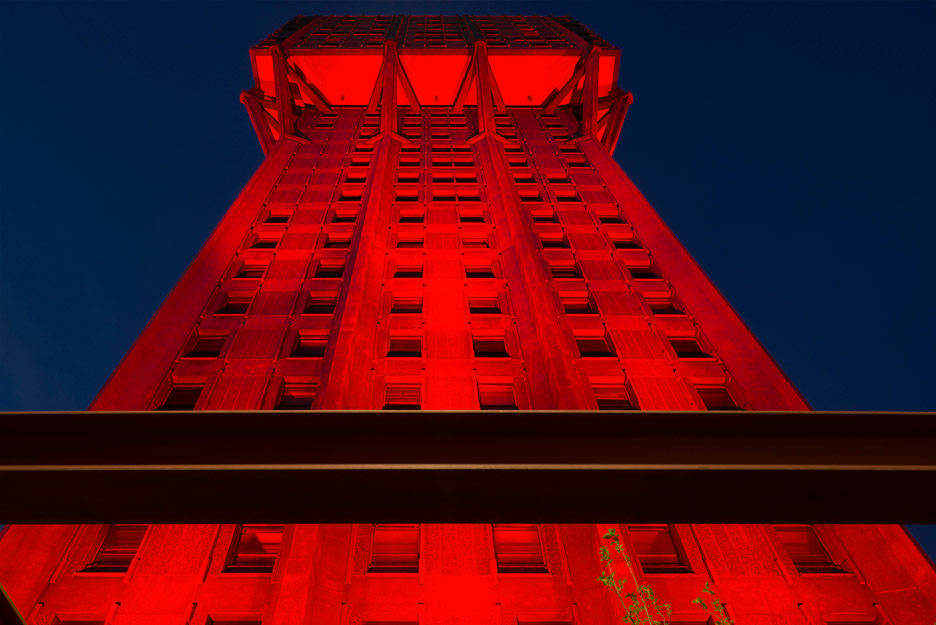
Audi's takeover of the Torre Velasca was part of a wider pattern that saw megabrands, such as Nike and PepsiCo stealing the spotlight during this year's Milan design week.
Based in Munich, Maurer is internationally known for his sculptural lighting designs. Some of his best known pieces include the 1969 Bulb Lamp, which is shaped like an oversized light bulb and included in the collection of New York's MoMA. He also designed the winged Lucellino lamp in 1992, and created the Porca Miseria! fixture from shattered crockery in 1994.
Other previous projects include a table without any legs with British brand Established & Sons and the Euro Condom – a protest against European guidelines banning frosted incandescent bulbs.
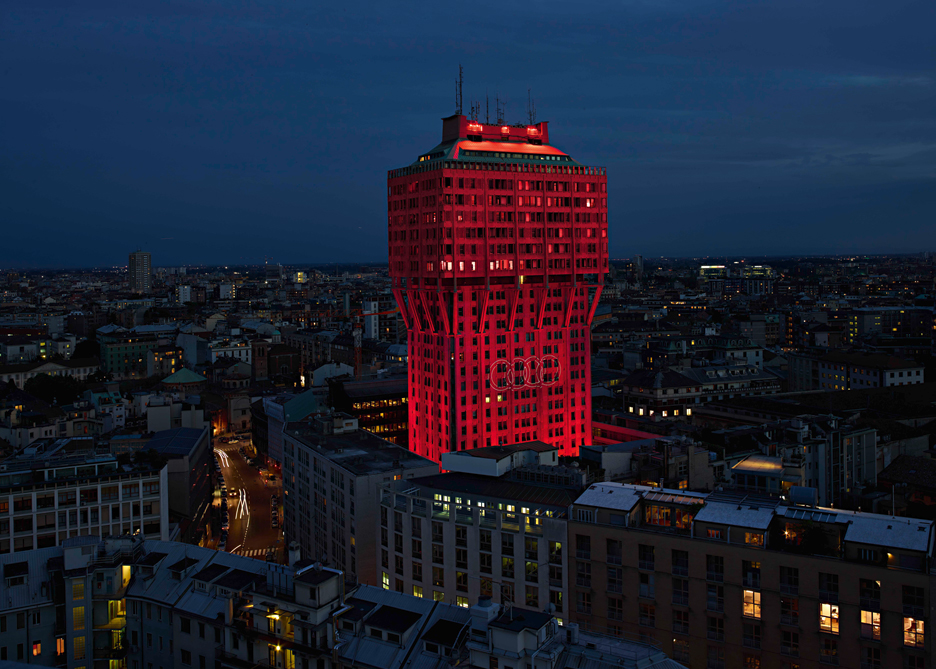
The Glow, Velasca, Glow! installation was created for the Open Borders exhibition, curated by the Italian magazine Interni for this year's Milan design week, which ran from 12 to 17 April 2016.
MAD also created an undulating canopy of coloured streamers that erupted from the first-floor arches of a palazzo facade for Open Borders.
Photography is by Saverio Lombardi Vallauri and Tom Vack.